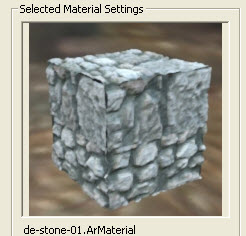Using a SketchUp texture for a bump map
-
if you have the patience, you can always create your own bumpmaps, on PS, from the original texture.
in rock textures where there are seams between the rocks (mortar, whatever), those seams should be deeper than the imperfections on the rocks themselves. If you use the texture as a bumpmap, that MAY NOT HAPPEN, because different colors in the rock may have the effect of making parts of the rock "deeper" or "shallower" than the mortar seams. (darker, deeper, whiter, shallower)
So you should select the seams between the rocks at photoshop and DARKEN them. Then you inverse the selection and lighten a bit the rocks surface, and desaturize it, so colors on the rock surface will be smoother.
-
I create bumpmaps from the diffuse. But Tailor make it to fit the occasion. Identifying the elements that should be raised and what should be lowered. The procedure and steps will depend of the type of diffuse you start out with.
Though, I do have bought a collection of Arroway textures, which comes with bump and specular maps. Very nice collection as you don't have to do much with them at all. -
@aceshigh said:
So you should select the seams between the rocks at photoshop and DARKEN them. Then you inverse the selection and lighten a bit the rocks surface, and desaturize it, so colors on the rock surface will be smoother.
I was thinking that you "artists", might draw a bump map with a pencil and then scan it. But I guess that would make the final texture look a lot like a pencil sketch.
We wrote a SketchUp routine to create bump maps from SketchUp models. (We "rendered" the model from a top of front view, in gray scale, using the z-distance as the color intensity, to create a "bump" image. Then we saved a second image from the same view, in color, to be used for the main texture.) But it turns out that for many of us, creating a detailed model of rocks, a brick wall, or a window, (my main thought was to use this for windows in a city scene which were in the background), which would work as a bump map was probably too difficult.
Where do people get good bump maps?
-
@al hart said:
Where do people get good bump maps?
Here's one place to go for good bumpmaps: http://www.crazybump.com/
-
@thomthom said:
Though, I do have bought a collection of Arroway textures, which comes with bump and specular maps. Very nice collection as you don't have to do much with them at all.
Thanks, I just downloaded their de-stone-01 sample.
I will try it out.

-
@AcesHigh - certainly you cannot always use the diffuse map as bump - and indeed mainly for the reasons you mention.
Yet sometimes - especially in a hurry and when that particular texture won't be in the foreground anyway, it can come handy if there is an option. -
@gaieus said:
Yet sometimes - especially in a hurry and when that particular texture won't be in the foreground anyway, it can come handy if there is an option.
When it's too far away to see the bump?
-
If it is SO far away, no (much) need for a bump anyway

I mean when it is far away enough for the somewhat faulty bump not being striking. -
@al hart said:
@aceshigh said:
So you should select the seams between the rocks at photoshop and DARKEN them. Then you inverse the selection and lighten a bit the rocks surface, and desaturize it, so colors on the rock surface will be smoother.
I was thinking that you "artists", might draw a bump map with a pencil and then scan it. But I guess that would make the final texture look a lot like a pencil sketch.
We wrote a SketchUp routine to create bump maps from SketchUp models. (We "rendered" the model from a top of front view, in gray scale, using the z-distance as the color intensity, to create a "bump" image. Then we saved a second image from the same view, in color, to be used for the main texture.) But it turns out that for many of us, creating a detailed model of rocks, a brick wall, or a window, (my main thought was to use this for windows in a city scene which were in the background), which would work as a bump map was probably too difficult.
Where do people get good bump maps?
that sounds exactly like the plugin I suggested here at Sketchucation some months ago!!!
How do you guys do it???? How do you set the z-distance as the color intensity???
-
@aceshigh said:
@al hart said:
@aceshigh said:
How do you guys do it???? How do you set the z-distance as the color intensity???
We did it by extracting all the faces and surfaces and running them through OpenGL in a separate routine and grabbing the OpenGL z-buffer.
However, I believe you can do the same thing by turning on fog, perhaps making it a color, making everything white, rendering the image, and then processing the intensity of the images. Things that are further should be a different color or darker.
(I was considering a similar "distance from the eye" routine for making shadows which get lighter as you move into the distance (without applying fog to everything), or Sketchy Shadows which change as the object in shadow is farther and farther from the eye.)
Advertisement








